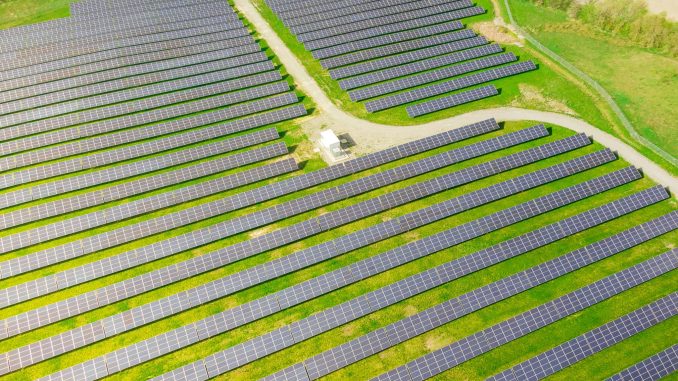
ZeroAvia today announced that it has developed an AI-driven, scalable smart microgrid optimization software which promises to minimize the cost of hydrogen production for clean aviation and other applications.
“Real-world testing of the Smart Hydrogen AI Production Software (SHAIPS) has shown in excess of a 20 percent reduction of the levelized cost of hydrogen (LCOH) compared to an electrolyzer generating all H2 based on the average electricity wholesale price,” says the company in a press release. “In order to test the software on real hardware, the company’s advanced software division, based in Silicon Valley, worked with its hydrogen infrastructure team to develop a working sub-scale smart microgrid in California, inclusive of renewable generation (solar), battery storage system, electrolyzers, and gaseous hydrogen storage.
“The hardware testing has validated many of the underlying assumptions in modeled scenarios, proving the applicability of the software for delivering cost-effective and eco-friendly hydrogen production. SHAIPS will allow the producer to set a limit on the carbon intensity of hydrogen production, meaning the hydrogen can qualify for the most generous subsidies in their geography.
“With ZeroAvia’s approach, excess renewable electricity can be stored as hydrogen, in batteries, or sold back to the grid. The system will also draw capacity from the grid for H2 production at periods of low carbon intensity energy and low cost, with the microgrid solar energy preserved in battery storage for use when most economically and environmentally sound.
“Major policy initiatives are already pushing the world towards an era of low-cost hydrogen production. In the U.S. the DOE targets USD1 per kg of hydrogen by 2030, and is investing USD7 billion in Hydrogen Hubs across the country, while the Inflation Reduction Act established up to USD3 per kg of hydrogen as part of a production tax credit. In the EU, mandates now require member states to build hydrogen refueling stations at fixed intervals and a newly established EU Hydrogen Bank will provide projects with fixed premium support.
Val Miftakhov, CEO, ZeroAvia, said: “Tomorrow’s aviation fuel can be made from water and sunlight with today’s technology, the only question is cost. Our advanced software team has delivered an impactful application that can provide end users in aviation, transport and other industries the clean hydrogen fuel they need to operate, at costs that work for all parties. It is inevitable that the levelized cost of hydrogen will fall over time, but we are seeking to accelerate that transition through innovation.”
The algorithm is designed to optimize the use of each component to extend their lifecycles, reducing project capital costs and further reducing the carbon intensity of the production process.
“SHAIPS was developed by a seasoned team that was previously involved in creating Juice.net, a leading smart-grid charging station network control and management system which featured advanced algorithms for electric grid load balancing and could manage Demand/Response requests from grid infrastructure,” said ZeroAvia. “Juice.net ensured smooth operation and enabled trading in the US wholesale electricity market. The JuiceBox charging system, along with the Juice.net software, has been recognized with several awards: the Global Cleantech 100 Award in 2018, the Silver Edison Award in Energy, Sustainability, and Vehicle Improvement in 2018, and the Grid Edge Awards in 2017.
“With a 2025 target for entry in service of its fuel cell powertrains, the company is also pressing ahead to develop the hydrogen fuel ecosystem necessary to support aviation. This began with the demonstration of its world-first Hydrogen Airport Refueling Ecosystem (HARE), now deployed at two separate airport locations. The current HARE system is composed of electrolytic production, mobile storage and distribution and also a fixed pipeline for moving hydrogen from landside to airside.
(Image: ZeroAvia)
For more information

